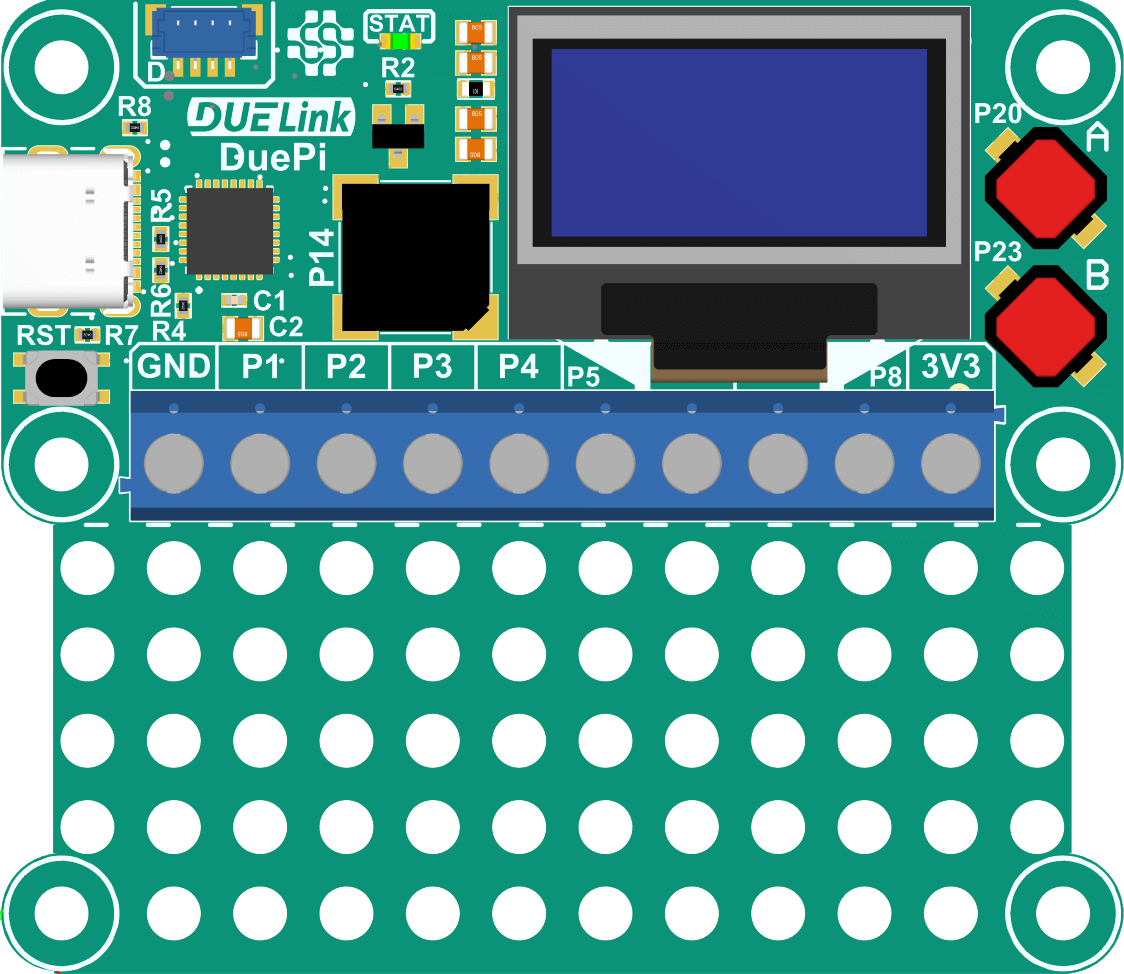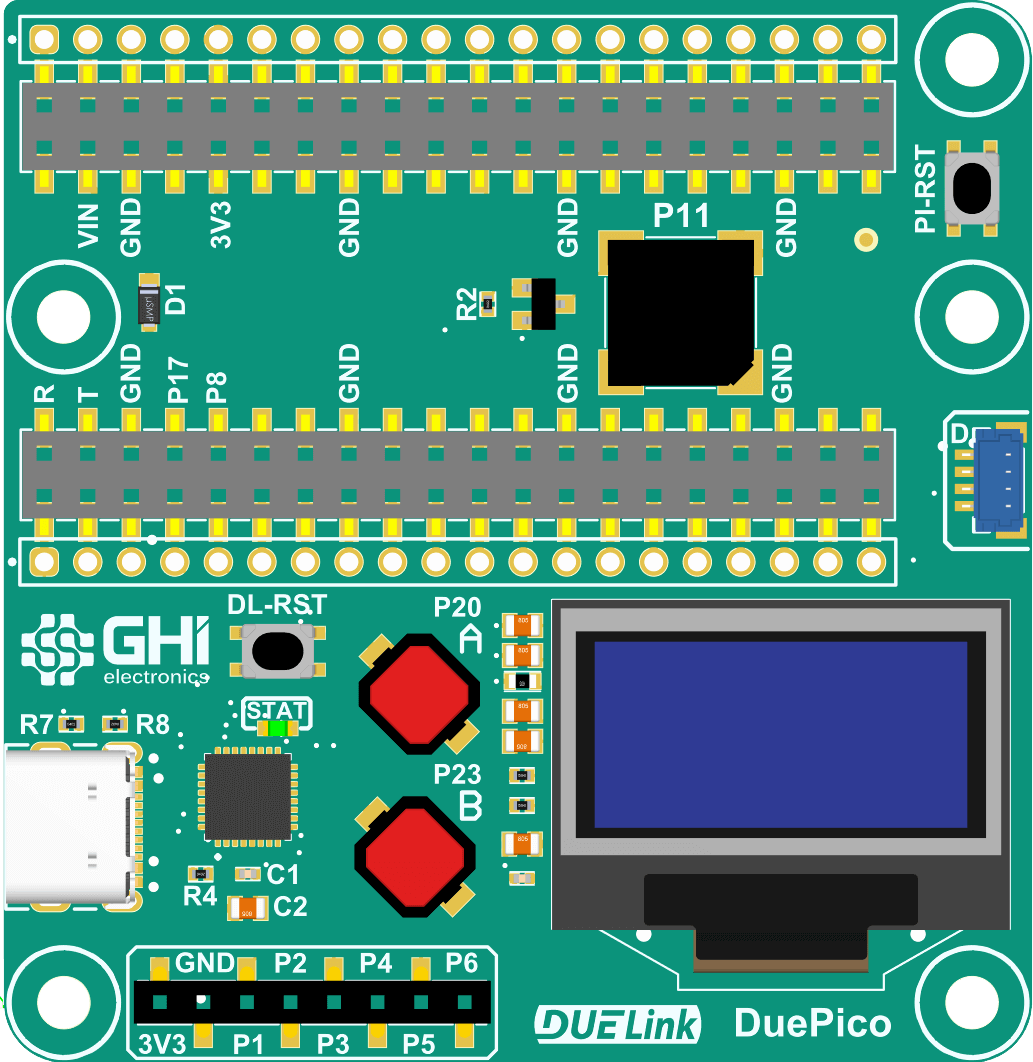Raspberry Pi

There are multiple ways to take advantage of the DUELink ecosystem with the entire Raspberry Pi product line.

RPI and RPI Zero

We recommend using DuePi Hat. The hat uses UART and works with both full-size Raspberry Pi and Raspberry Pi Zero. It includes a display, buzzer, terminal block for wiring, and a Downstream socket to extend your RPI with hundreds of sensors and actuators.
Everything is accessible through any of the RPI supported Hosted Languages, such as Python .
# Show IP address on display
print("Bye DUE!")
# Beep once a second
Here is an example that reads temperature from a temp sensor:
# Read Temp from sensor on downstream
# Show on built-in display
Another option is to use use breakout boards that bring the RPI’s I2C bus to a standard JST socket, like the Sparkfun Qwiic Shim for Raspberry Pi or Sparkfun Qwiic pHat.

When using the Qwiic pHat, only use one socket as Downstream. You can use the other sockets to connect other, non-DUELink things.
Same code as before but we are now using the I2C bus.
# Read Temp
# Print to Console
Raspberry Pi Pico
Using Raspberry Pi Pico is simply done using DuePico. It includes a display to help you with printing diagnostics info and a downstream socket to help you daisylink modules.

RP2350 & RP2040
Beyond the official RPI Pico, using any board with a RPI microcontroller is possible. We recommend ones with a JST connector, like Adafruit QT Py RP2040 or Sparkfun Pro Micro RP2350 but you can use the Breakout to wire any other boards as well.

Pay attention to how much power these little circuits can provide. Consider adding a Power Inject module to add more juice!
MicroPython is one of the supported options. Here we are showing the light level on a display.
# Read light
# Show on display